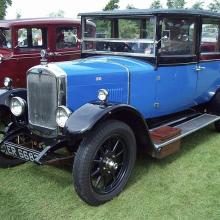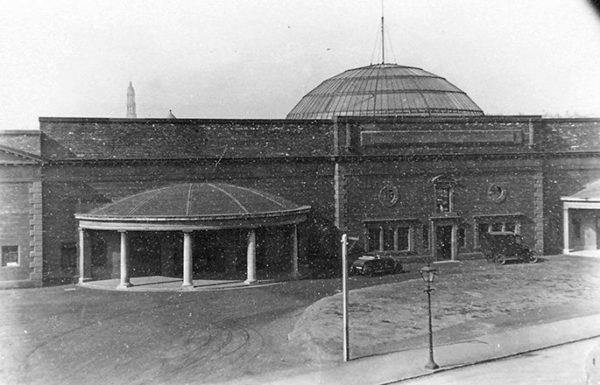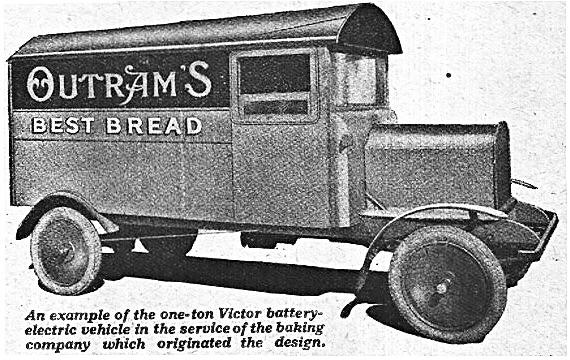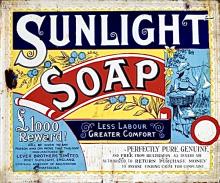
Too big, too small, too expensive … the problem with white elephants
As we saw last week, owing to the destruction by fire of the Kelvin Hall in Glasgow, the prestigious Scottish Motor Trade Association switched its annual motor show to the Industrial Hall and Waverley Market for the week of 13–21 November 1925. It was a scaled-down event with commercial and industrial vehicles excluded, since even the combined square-footage of two Edinburgh venues could not match that formerly available in the West.
Despite the lugubrious predictions of pessimists and appalling weather, there were large crowds and brisk sales at Edinburgh's first purpose-built exhibition space on Annandale Street. The Industrial Hall’s proprietors promoted the view that everything had gone swimmingly, but beneath the surface all was not well. The books here had never balanced. Investors had started considering how best to cut their losses.
A long article in the Scotsman, on 21 November 1925, considered competing views as to the venue’s potential, its role on a municipal and national scale and as a counter-balance to any undesirable predominance of Glasgow. However, it was becoming clear that the building’s future as a purpose-built venue for exhibitions was far from certain.

EXHIBITION HALL.
AN EDINBURGH PROJECT.
LORD PROVOST’S VIEWS.
The return of the Scottish Motor Show to Edinburgh, owing to the special circumstances connected with the destruction by fire of the Kelvin Hall, Glasgow, has been instrumental in raising again the question of the responsibility for an exhibition hall being undertaken by the Corporation.
Such a project was under consideration some three or four years ago. The present Lord Provost, Sir William Sleigh, was at that time largely instrumental in bringing the matter forward in the Town Council. The company who erected the present Industrial Hall in Annandale Street came forward, however, with their scheme for a building suitable for large exhibitions, and it was considered only fair that they should be allowed to make an effort in this direction without having to meet municipal competition.
The necessity for a hall, in which industrial and other exhibitions on a large scale may be given, for every progressive city is generally recognised. The exhibitions which have been held during the last three years in the Industrial Hall have been instructive. They have given publicity to a large variety of British products; and they have served a useful purpose in bringing the latest contrivances and inventions to the notice of the general public.
It is believed that the owners of the Industrial Hall are at the present time considering its sale, and naturally in that event the way is open for the Corporation of Edinburgh taking up again what, it is obvious, may be an important factor in the progress and development of industrial interests in the city.

The Public Interest.
Lord Provost Sir William Sleigh, on being requested for an expression of opinion on the subject, made a statement to a representative of The Scotsman. ‘When the question was before us a few years ago,’ he said, ‘various sites not only for a hall for exhibitions, but for forming enclosed grounds which would be suitable, for example, for the Highland and Agricultural Society’s show, were suggested. One of these sites was the polo ground at Murrayfield.
‘There are in Edinburgh many considerable areas of ground unbuilt upon which might be suitable for the purpose in view. We gave a guarantee at that time, in view of the Industrial Hall project taking shape, that we would not interfere in the way of competition as a Corporation for a matter of five years, as we did not wish to handicap private enterprise. If the Industrial Hall Company decide to part with their property the ground is once again clear.
‘Such an enterprise as the provision of a public hall is obviously a matter of public interest, and it should be considered in relation to its effects not merely as a separate financial undertaking, but on the general interests of the city. Even although such a hall might not be financially remunerative in itself—but I am convinced that it could be made financially remunerative—the exhibitions held in it would be of importance to the industrial and commercial community of Edinburgh as a whole.

Edinburgh’s Claims.
‘There are exhibitions from time to time which might be held in Edinburgh if there was suitable accommodation. We have the present example oi the Motor Show. There has never been worse weather in the experience of the exhibitors, but in spite of this the attendance is up to what has been the experience in Glasgow, and, probably, by Saturday night, the Glasgow record will have been exceeded.
‘I have no doubt that people from the country who wish to see an exhibition in which they are interested would as soon come to Edinburgh as to Glasgow. It would, I think, be a matter for great regret for the citizens of Edinburgh if Glasgow came to be generally regarded as the natural rendezvous for such exhibitions.
‘The Waverley Market hardly meets the case. It is scarcely worth spending money on the Waverley Market, in view of the ancient right held by the market gardeners, for whom accommodation has to be found each week in the Market, no matter what exhibition may be held there. The area, also, is far too small for a modern exhibition of any magnitude.
‘The site of the Industrial Hall, although perhaps not altogether ideal, is nevertheless fairly central, especially if you keep in mind that Edinburgh and Leith are now one, and that in Leith there are over 80,000 people living in close proximity to the hall.
‘When trade is a little depressed, as at present, that is the time for manufacturers and traders to take every advantage of placing their goods before the public; and there is no better way of doing that than by exhibitions.
‘In the Ideal Home Exhibition a great many new appliances were brought before the public, who otherwise would not have known of their existence—such things, for example, as fittings for hot water baths, attachments for the scullery which will give a quick supply of gas-heated water, and so on. Then there is the Fat Stock Show, which might be held in a Corporation exhibition hall.
‘The Industrial Hall is perhaps not large enough. There was a recent example of this in the International Flower Show, where they had to erect a marquee as an accessory to show a number of the exhibits. There is, however, sufficient ground in the vicinity of the hall for extension purposes. I believe the Industrial Hall and its site could be made suitable if they could be acquired at a price which would reasonably ensure the Corporation against loss. I believe that if the hall were enlarged and properly run, it might be made to show profit.’
Scotland’s Share.
‘The Corporation would have in view, of course, not so much the making of money out of the hall as of keeping Edinburgh before the country at large in the way of exhibitions. The Board of Trade are going to run two exhibitions, one in London and one in Birmingham, on the line of the World’s Fair at Leipzig. Personally, I think Scotland should have been recognised in fixing the stances of one of these shows. If a Government Department is going to assist in the organisation and the finance of such exhibitions, why should not Glasgow and Edinburgh have a turn?
‘That, of course, postulates that Edinburgh would have 1 hall suitable for such exhibitions. I think Edinburgh has been loo lax in the past, and too apt to allow everything to drift away from her in the shape of industrial enterprise. I think something should be done to develop existing industries; and, if a suitable opportunity offers itself to the Corporation to assist in the way suggested. I think we should not miss it. An exhibition is a splendid Form of propaganda.
‘We want,’ the Lord Provost added, ‘to attract people to Edinburgh, and an exhibition is a useful means to that end. Glasgow is preparing to spend a large sum, something like £160,000, in re-erecting the Kelvin Hall, which is not on so central a site as Annandale Street is for Edinburgh. The Annandale Street site is within three minutes from the Post Office. If Edinburgh does not do something to secure its share in enterprises of this kind, they will certainly go to Glasgow. I think the matter should have most serious consideration at the present time.’

Lost Business.
Treasurer Guest, who is president of the Commercial Motor Users’ Association, expressed himself as in favour of an exhibition hall being under the control of the Corporation. A hall of this kind was, he considered, a necessity for the city.
They wanted a show of commercial motor vehicles as well as of private cars, for example. He believed a considerable amount of business would have been done if a commercial motor show had been held in Edinburgh, and it would also have been a very convenient centre for business men over a wide area. He had spoken to two people that day, who had stated that they would have bought motor vehicles for their businesses if there had been a display in Edinburgh.
Edinburgh’s Support of Exhibitions.
Criticism of the proposal was voiced by Mr Michael A. T. Thomson, Master of Edinburgh Merchant Company, who said that unless the scheme was proved to him to be a paying proposition he would not approve of it. The Industrial Hall had been built by a private syndicate, whose object was obviously to make a profit out the undertaking. They had not done so. If the Corporation were offered the hall at a bargain price, then it might be worth the money; but, even then, what guarantee was there that they would make it a paying concern?
There was some talk of enlarging it, but that would be an enormous expense. Apart from the Motor Show, which it was said they might share alternately with Glasgow, he did not see any use to which the hall could be put. Grocers’ exhibitions and bakers’ exhibitions had been tried in Edinburgh and had been failures.
The public were becoming tired of exhibitions, and, apart from the lack of public interest, they were a tremendous expense to manufacturers and exhibitors. He did not think they were worth the money or the trouble. The hall, in his opinion, would become merely a ‘white elephant’ under the ownership of the Corporation, and he saw no reason why the citizens should bear the financial responsibility involved in its purchase.
The Waverley Market had been a paying proposition, because of its extremely convenient, central situation, and because of its size, which made it adaptable for the smaller class of function. The Industrial Hall, on the other hand, had not competed successfully with the Waverley Market, and he did not think it ever would. Surely it was too much to ask the Edinburgh public to be saddled with the cost of a hall which was to be mainly used for a motor show once in two years.
‘Where private enterprise has failed,’said Mr Thomson in conclusion, ‘I do not think the Corporation is likely to succeed.’
Follow again here on 3 October to find out what happened next.



